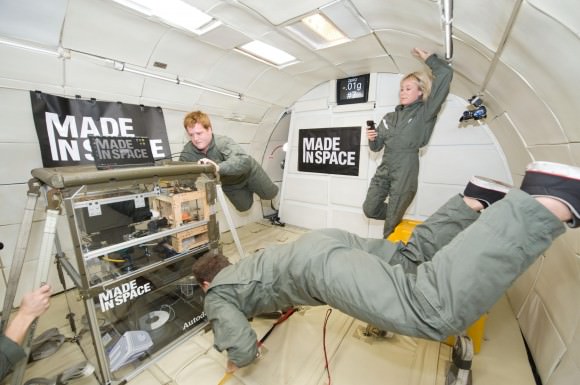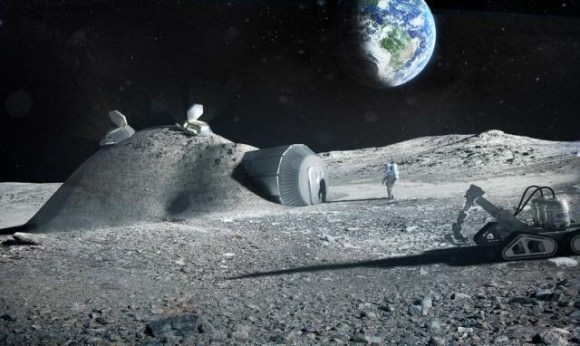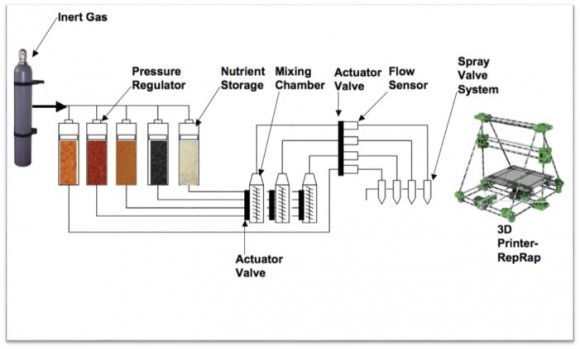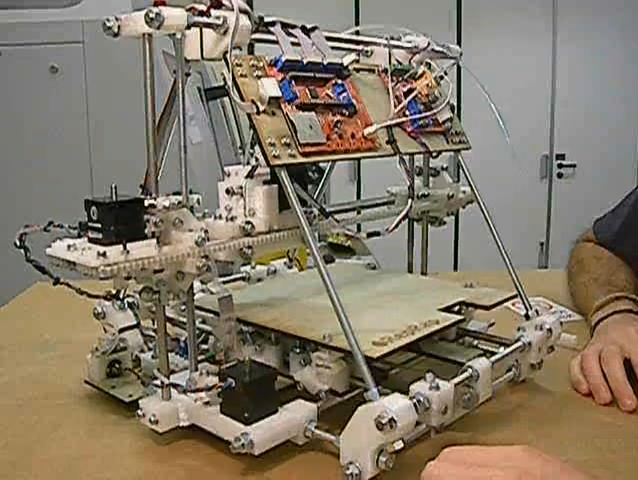The International Space Station may soon have its very own Star Trek food replicator.
Earlier this week, NASA awarded a $125,000 six month grant to the Systems & Materials Research Cooperation to design a 3D printer capable of printing a pizza from 30-year shelf stable foodstuffs.
Founded by Anjan Contractor, SMRC built a basic food printer from a chocolate printer to win NASA’s Small Business Innovation Research Program in a trial video. The design is based on an open-source RepRap 3D printer.
Contractor and SMRC will begin construction on the pizza-printing prototype in two weeks. Pizza has been one item missing from astronauts menu for years. The 3D printer would “build-up” a pizza serving by first layering out the dough onto a heated plate then adding tomato sauce and toppings.
But this isn’t your mother’s pizza, as the proteins would be provided by cartridge injectors filled with organic base powders derived from algae, insects and grass.
Yummy stuff, to be sure!
Of course, one can see an immediate application of 3D food printing technology for long duration space missions. Contractor and SMRC envisions 3D food printing as the wave of the future, with the capacity to solve world hunger for a burgeoning human population.
Could a 3D food printer be coming to a kitchen near you?
Curiously, printing confectioneries and pet food pellets would be the simplest application of said technology. Printing a soufflé and crowned rack of lamb will be tougher. 3D printing technology has made great strides as of late, and RepRap has made a printer which is capable of printing itself. Those who fear the rise of Von Neumann’s self-replicating robots should take note…
Should we welcome or fear our self-replicating, pizza-bearing overlords?
The International Space Station is due for the delivery of its first 3D printer in 2014. This will give astros the capability to fabricate simple parts and tools onsite without requiring machining. Of course, the first question on our minds is: How will a 3D printer function in zero-g? Will one have tomato paste an insect parts flying about? Recent flights aboard a Boeing 727 by Made in Space Inc have been testing 3D printers in micro-gravity environments.

Further afield, 3D replicators may arrive on the Moon or Mars ahead of humans, building a prefab colony with raw materials available for colonists to follow.

Will 3D food replicators pioneered by SMRC be a permanent fixture on crewed long duration space missions? Plans such as Dennis Tito’s Mars 2018 flyby and the one way Mars One proposal will definitely have to address the dietary dilemmas of hungry astronauts. Biosphere 2 demonstrated that animal husbandry will be impractical on long term missions. Future Martian colonists will definitely eat much farther down the food chain to survive. SpaceX head Elon Musk has recently said in a Twitter response to PETA that he won’t be the “Kale Eating Overlord of Mars,” and perhaps “micro-ranching” of insects will be the only viable alternative to filet mignon on the Red Planet. Hey, it beats Soylent Green… and the good news is, you can still brew beer from algae!

Would YOU take a one way journey to Mars? Would you eat a bug to do it? It’ll be interesting to watch these 3D printers in action as they take to space and print America’s favorite delivery fast food. But it’s yet to be seen if home replicators will put Dominos Pizza out of business anytime soon. Perhaps they’ll only be viable if they can print a pizza in less than “30 minutes!”

